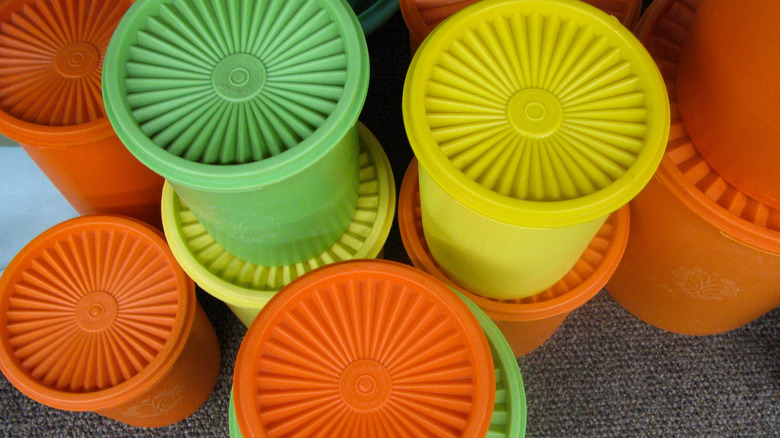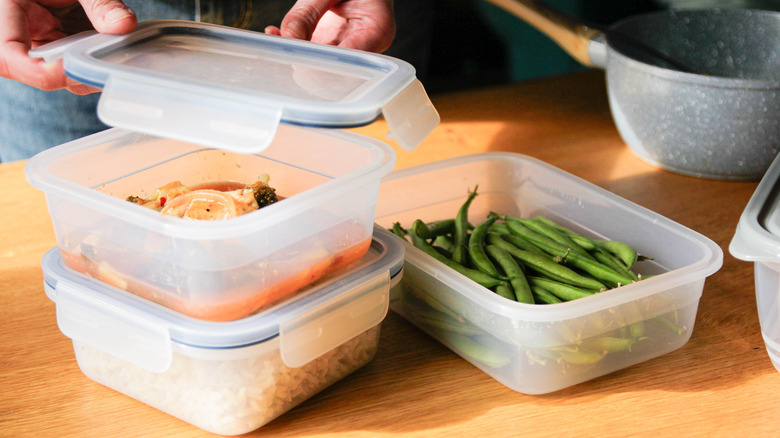Vintage Tupperware Is Great For Collecting, But You Really Shouldn't Use It
We may receive a commission on purchases made from links.
Collecting vintage Tupperware can evoke the same feeling of gratification that other items from the past deliver, and what's more, vintage Tupperware may actually be worth something. However, you probably shouldn't use it for food. Tupperware used a chemical called BPA (bisphenol-A) in its containers until March 2010. BPA is a chemical commonly found in polycarbonate plastics like water bottles and food storage containers, and excessive exposure to it can lead to issues ranging from cardiovascular and fertility problems to developmental delays in children. The chemical has also been linked to certain cancers.
But BPA isn't the only chemical to be concerned about in vintage Tupperware. If you find a set from the 1970s, it should be used for display only, as Tupperware from this time period have been known to contain arsenic, lead, mercury, and calcium. The presence and amounts of these chemicals vary based on the Tupperware's particular aesthetic, but it's not worth the risk.
If you find an adorable piece of Tupperware and want to use it for food, check for specific numbers on the container that will tell you if it's BPA-free. The numbers to look out for on BPA-free Tupperware are 1, 2, and 5, while the number 7 signals the possible presence of BPA. However, just because you've found a food storage container that likely doesn't contain BPA also doesn't mean you're in the clear. The truth is, even BPA-free plastic still contains other chemicals that can be harmful when leached into our food.
It's best to avoid plastic food storage containers altogether
In addition to chemical content, there are other factors to take into consideration before deciding that your containers are safe for food. If your container has stains or odors, either from recent food or food you don't even recall eating, it's best to toss it. If you've got some leftover red sauce to clean out, that may be different, but lingering stains and odors can be a sign of food residue or bacteria just waiting to make you sick. Think twice before using the container if it has damage, like cracks, warping, chips, or visible scratches, as there's a high chance it's home to bacteria that will be nearly impossible to get rid of, or that it will leach other harmful chemicals or microplastics into your food.
When it comes to containers, it might be best to veer away from plastic altogether, vintage or not. This includes any potentially dangerous margarine containers you've been reusing. Recycling is great, but not when it poses a health risk to you or your loved ones. Good alternatives to plastic containers are those made with glass, stainless steel, or even bamboo. If you have a hard time finding any that fit your needs, these glass storage containers with bamboo lids will keep your food safe from harmful chemicals. Vintage is great, but it may just be time to find a new favorite food storage container for every one of your kitchen tasks.

